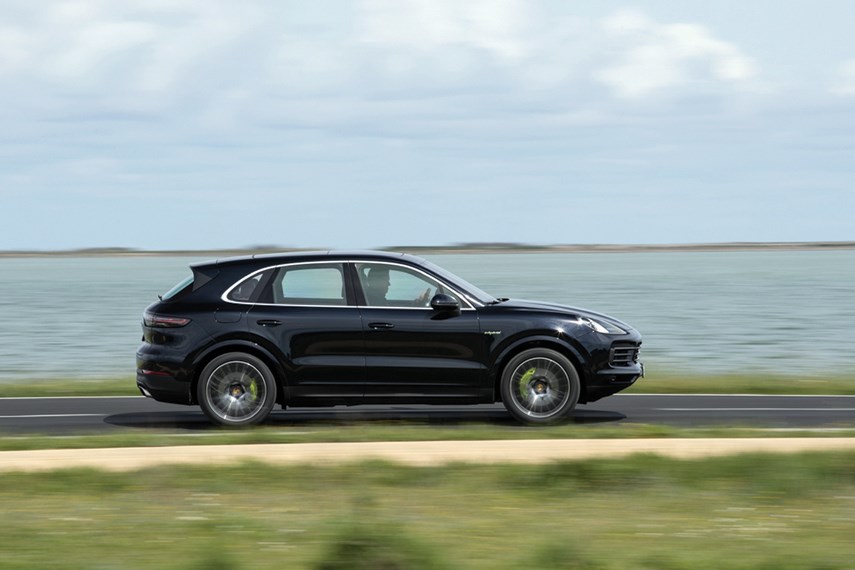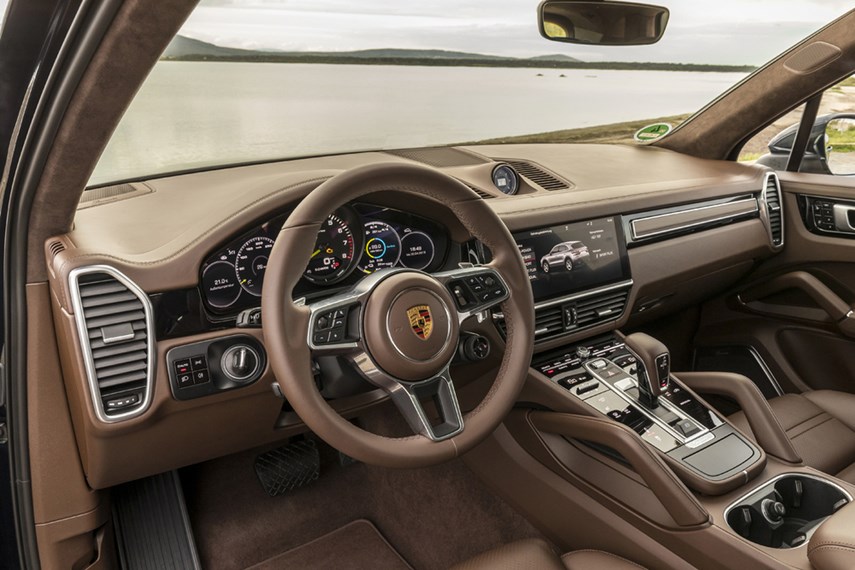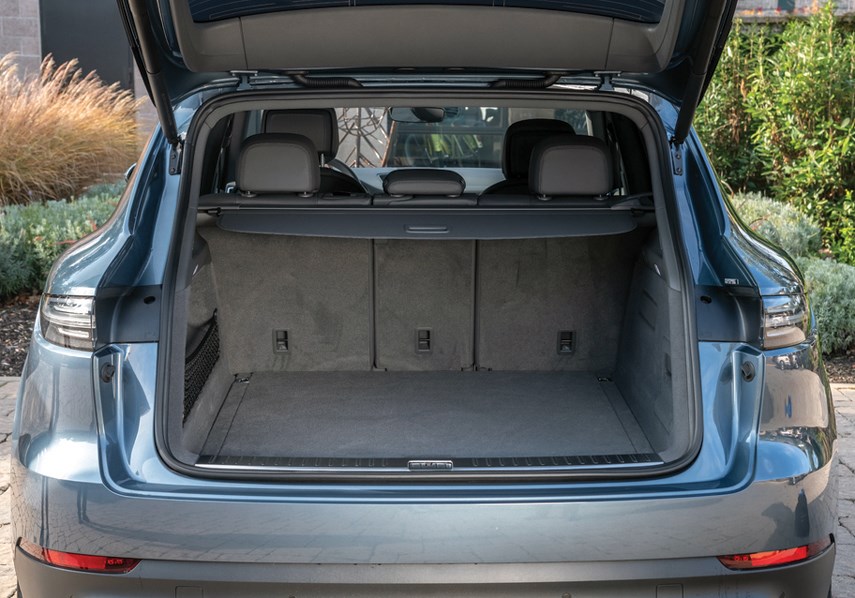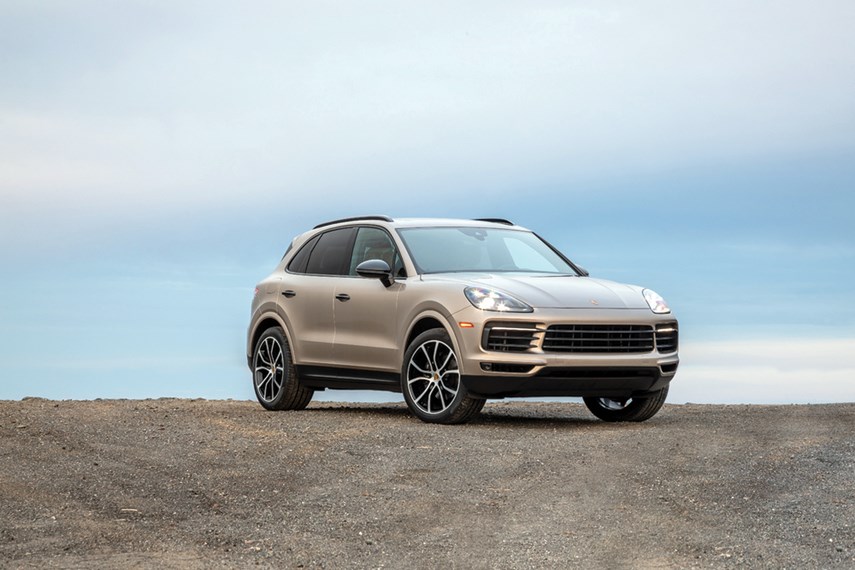The Porsche Cayenne was first designed and released in 2003. At the time, the idea of Porsche producing an SUV was shocking to say the least.
As the years passed by, the addition of a luxury SUV helped Porsche to succeed in a changing market, and the Cayenne as well as the newer Macan proved to be very profitable. The third-generation of the Porsche Cayenne is very much all-new, and sits atop the MLB platform that other Audis and Volkswagen vehicles share. Despite sharing some components with the Audi Q7, the Porsche Cayenne is every bit a Porsche and buyers will have hard time spotting anything that resembles an Audi.
The Cayenne feels and drives much like a Porsche and is now a benchmark in this industry filled with cars like the Audi Q7, BMW X5, Lexus GX, Mercedes GLC and Acura MDX.

Although not covered in this review, Porsche is also introducing a “coupe” version of the Porsche Cayenne – which is essentially a sportier version of the Cayenne with sloping roofs and sleeker design (but still with 4 doors).
Design
The interior design of the Porsche features the “Advanced Cockpit” concept with a clean, modern design. Along with an almost space-age look and feel to the interior, it features a large 12-inch touchscreen as well as two seven-inch screens on the instrument panel. The Porsche Connect app also offers a ton of features to help you check on the location and status of your vehicle. You can check fuel, oil level, and tire pressure, as well as lock or unlock the vehicle from afar.
Sound insulation is excellent, the 14-way adjustable seats are supportive and comfortable, and high quality materials are everywhere. This SUV truly is a luxury performance vehicle, through-and-through.

The 2019 Porsche Cayenne borrows some of the styling cues from the highly popular Macan, but with a more conservative overall feel. While you may agree that it looks more “generic” than previous generations, the new Cayenne is far better looking – both inside and out.
It has a larger footprint than the predecessor (longer, wider), and this makes for more ample room including the cargo room – space in the trunk is now 767 litres. Along with this, the 2019 model weighs much less thanks to substantial aluminum panels.
Performance
There are many choices when it comes to the 2019 Porsche Cayenne, and first we must start with the trim levels: Cayenne, Cayenne S, Cayenne Turbo and the Cayenne E-Hybrid. The engine under the hood of the base model Cayenne is a V-6 Turbo 3.0-litre model that produces 355 horsepower, an increase of 35 h.p. over the previous model. The Cayenne can accelerate to 100 kilometres per hour in just 6.2 seconds. Fuel economy for combined highway/city is roughly about 11.4 l/100 km.
If that isn’t enough for you, the $92,000 Cayenne S option has a V-6 twin-turbo 2.9-litre engine with 434 h.p., taking you from 0-100 km/h in only 5.9 seconds. Max speed for both the Cayenne and the Cayenne S is 265 km/h. Fuel economy for this engine is only slightly worse at 11.8 l/100 km.
Still not enough? For the $141,800 Cayenne Turbo, you can have your cake and eat it too. Under the hood is a V-8 twin-turbo 4.0-litre engine with an incredible 541 h.p., a top speed of 286 km/h, and acceleration from 0-100 km/h in 4.1 seconds.

The Porsche Cayenne offers up a hybrid option as well, one of the first plug-in hybrids in the segment. It does have an all-electric range, but can only travel a very limited 23-44 km before the combustion engine has to kick in. Porsche recommends installing an industrial electrical outlet or purchasing an optional charging pedestal, an expensive option for some buyers. When charging, a safety feature will lock the vehicle to prevent it from being driven away.
An all-new eight-speed Tiptronic S transmission has been redeveloped for 2019 and improves comfort and performance while also improving fuel efficiency. The braking system on the Porsche has a newly available ceramic coating on the cast iron disc which allows for even better response time and stability. For further stability, the Porsche 4D Chassis control optimizes driving in all three directions to give an impossibly smooth ride. Adaptive air suspension is also available which can raise the vehicle when required. Off-roading through water is possible in depths up to 50 centimetres.
So how does the Cayenne drive and feel? It’s immensely refined and smooth, while retaining a Porsche-level of performance and road handling. The car feels quite different than its predecessor, and perhaps better calibrated to the typical buyer in this segment who expects a silky smooth ride and high level of performance. It is less “raw” than before, but the overall feel is extraordinary and the ride/handling/acceleration combo beats anything in the current marketplace. In comparison, cars like the Audi Q7, Lexus GX, and Acura MDX feel soft and too compliant. I would say the Mercedes and BMW models come fairly close, though there is still something very special about owning a Porsche.
Summary
Porsche is a very recognizable brand name, known less for luxury and practicality. However, these two factors are beautifully engineered in the Porsche Cayenne while enhancing Porsche’s core strength: performance. The drivers of the Cayenne get a healthy dose of sportiness, technology, luxurious detailing, myriad of options and superb quality. However, such an excellent combo does not come cheap.
The Porsche Cayenne starts at $76,700 MSRP and almost doubles in price to $141,800 for the Turbo trim. Porsche is clearly hoping to convince buyers that there is a Cayenne for everyone in the luxury segment, offered in a wide range of prices and option. Porsche buyers can keep themselves busy for hours or days trying to customize this vehicle to their tastes … such is the joy of shopping for a Porsche brand.



